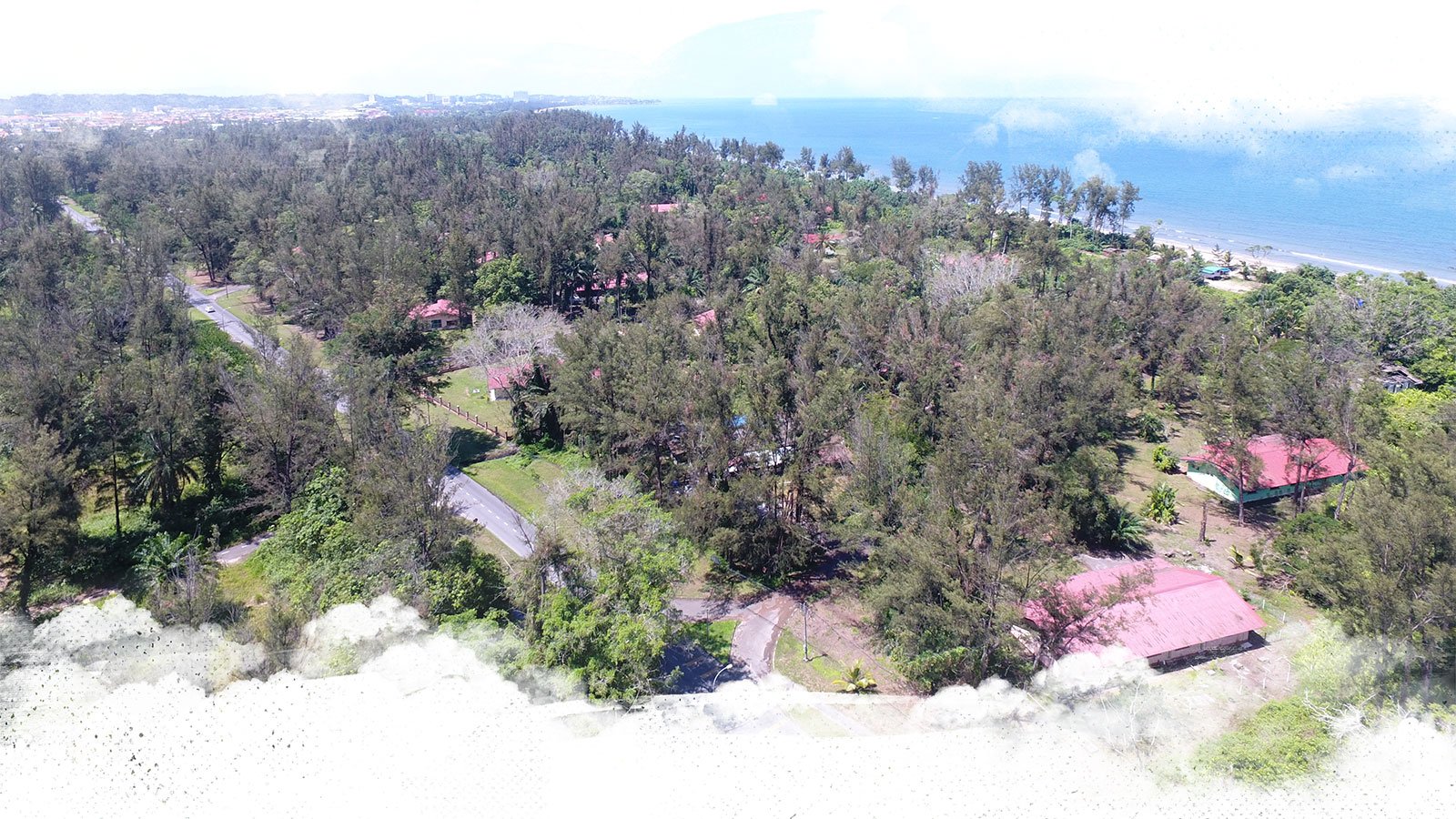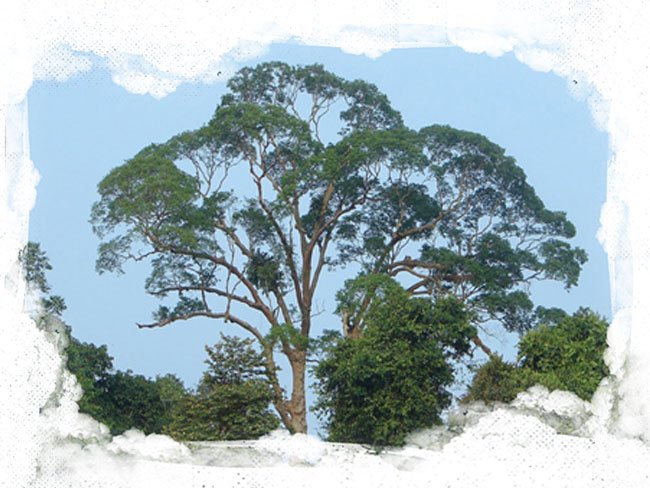FLORA ATTRACTION

Tapang, as known among the Malays and Iban in Sarawak, is scientifically called Koompassia excelsa. To the Kayan and Kenyah communities, this tree is called Tahid; Tanid to the Muruts and Tanyid to the Berawans. In Peninsular Malaysia the vernacular name is Tualang. Tapang trees are only found in Sumatra, Peninsular Malaysia, Borneo, the Philippines and New Guinea. In Sarawak, Tapang trees are found throughout the state, mostly in the lowland forests. This species grow in stream valleys, lower slopes of ridges, up to 400 – 600m altitude.


Tapang is among the tallest emergent rainforest tree which could exceed the height of 80 metres. In rainforest stratification, Tapang is categorised as the emergent layer. This layer consists of the biggest and tallest trees whose crowns appear broad and spreading above 4 other layers in the forest vegetation. Like most tall rainforest trees, Tapang has huge buttress roots to support its weight.
Tapang trees branch well above the canopy and have slippery trunks, making it difficult for animals to climb onto them. The species therefore often attracts Giant honey bees, Apisdorsata to build their huge comb on the tree branches as honey bears could not reach to the combs.
The population of Tapang is rather small as the trees flower at irregular intervals, on average once in 5 to 6, or even 25 years. Tapang is listed as Protected Species in the Wild Life Protection Ordinance, 1998.
- Tapang is a keystone species in the ecosystem
Bees pollinate trees, assisting in the growth of trees in the rainforest. As Tapang trees provide home to the bees, it acts as the keystone species that binds together all the required elements in the ecosystem. - A symbol of rank and significance
Tapang trees are huge and grow tall above the forest canopy, symbolic of the Guest of Honour, The Governor of Sarawak who holds the highest position in the State and plays a significant role in the State’s governance.

FIG (Ficus tinctoria)
Ficus is a genus of 850 species of woody plant from the family Moraceae. Known as pokok Ara in Malay, the species is rather dominant in Borneo with 137 species and in Sarawak, 65 species with 71 varieties of fig trees could be found. Ficus tinctoria, also known as dye fig, or humped fig, is found in Asia to northern Australia to South Pacific islands. It is a strangling fig, up to 25 m tall and started its life as an epiphyte that sends its roots to the ground. After a while, it encircles its host tree and “strangles” it.
The fruits of the figs are very interesting as they are actually enclosed inflorescence called a syconium, an urn-like structure lined on the inside with tiny flowers. When a fig tree ripens, a lot of animals like the hornbills (especially Rhinoceros Hornbill, Black Hornbill, Bushy-created Hornbill and Oriented Pied Hornbill) are attracted by the figs.
Animals such as swifts, swiftlets, other insectivorous (insects-eating) birds and dragonflies are also sighted near to ripening fig trees as they feed on the fig wasps that come out from the fruits. If you open a fig, you will find fig wasps inside. Typically, there are only one species of wasp capable of fertilizing each species of fig. Fig wasps lay their eggs inside the fruit and when they hatch, they mate. The winged female wasp will fly out bringing pollen with them and pollinate the flower when they get into another unripe fig whilst the male fig just died inside the fig. Fig trees are protected by law in Sarawak because they are an important food source for animals.
Fig as a keystone species in the ecosystem
As animals forage for food in the forests for survival, the existence/ growth of figs is significant as many animals depend on this species as a food source. When fig trees disappear or die, their food supply depletes and it could indirectly affect the wildlife population in that particular forest area
